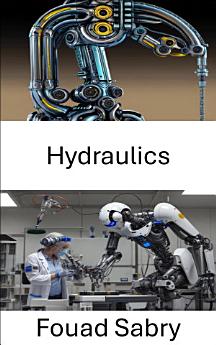Hydraulics: Fluid Power Systems for Advanced Robotic Applications
About this ebook
Chapters Brief Overview:
1: Hydraulics: Discover the core principles that govern hydraulic systems and their significance in robotics.
2: Hydropower: Explore how water power has been harnessed for energy, fueling advancements in robotics.
3: Mechanical engineering: Understand the role of mechanical engineering in developing hydraulic machinery.
4: Water wheel: Learn about the water wheel's invention and its impact on hydraulic technology.
5: Pneumatics: Investigate the connection between hydraulics and pneumatics in fluid power systems.
6: Ismail alJazari: Examine the contributions of this ancient engineer to hydraulic innovations.
7: Noria: Discover the historical significance of the noria and its role in water lifting technology.
8: Water clock: Uncover the mechanics behind water clocks and their influence on engineering.
9: Water hammer: Understand the phenomenon of water hammer and its implications for hydraulic design.
10: Fluid power: Delve into the concepts of fluid power and its essential role in modern robotics.
11: Hydraulic engineering: Explore the principles and practices within the field of hydraulic engineering.
12: Millwright: Learn about the millwright's role in the implementation of hydraulic systems.
13: Trip hammer: Discover the mechanics of the trip hammer and its applications in hydraulics.
14: History of fluid mechanics: Trace the evolution of fluid mechanics and its relevance to robotics.
15: Ancient technology: Examine ancient hydraulic technologies that paved the way for modern engineering.
16: Ancient Roman engineering: Understand the advancements made by the Romans in hydraulic systems.
17: Technological history of the Roman military: Explore how hydraulics supported military engineering feats.
18: History of engineering: Gain insights into the historical development of engineering practices.
19: Pascal's law: Discover Pascal's law and its foundational role in hydraulic principles.
20: Aqueduct (water supply): Learn about the engineering behind aqueducts and their historical significance.
21: History of mechanical engineering: Trace the development of mechanical engineering through hydraulic advancements.
By immersing yourself in "Hydraulics," you will not only enhance your understanding of robotics but also appreciate the intricate history and technology that underpin this field. This book serves as an indispensable resource for professionals, students, and hobbyists, ensuring that the knowledge gained is truly invaluable.







